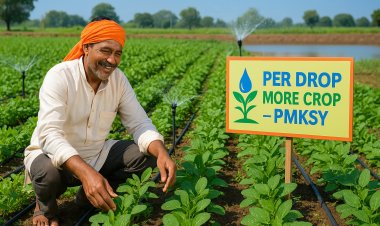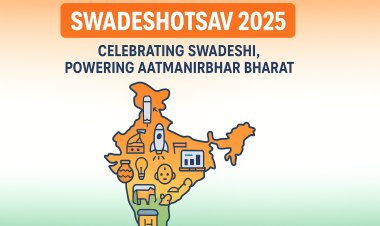Break Down Budget 2025-26: Key Highlights and Economic Impact
Dive into a comprehensive analysis of Budget 2025-26. Explore the key highlights, major announcements, and their potential impact on the Indian economy. Understand how the budget's proposals may affect businesses, individuals, and various sectors.
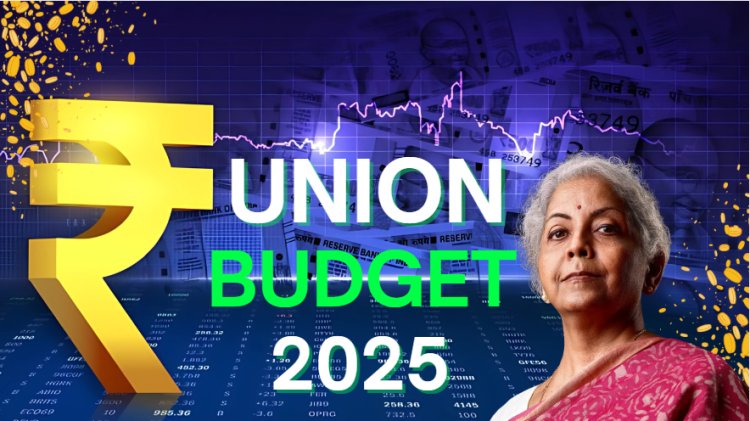
The Union Budget 2025-26, presented in February 2025, outlines a strategic roadmap for economic growth, financial inclusion, and infrastructure development. With a focus on "Viksit Bharat" (Developed India), the budget prioritizes agriculture, MSMEs, investment, exports, and social welfare while maintaining fiscal discipline.
Focus Areas for Viksit Bharat in Budget 2025-26
-
Agriculture Modernization
-
MSME Growth
-
Infrastructure Expansion
-
Export Promotion
-
Social Inclusivity
-
Green Energy Transition
Key Targets for 2025-26 Budget
-
GDP Growth: 7.5%
-
Fiscal Deficit: 4.5% of GDP
-
Exports: $500 billion
-
New Jobs: 10 million
Indian 2025-26 Budget Allocation (in ₹ lakh crore)
| Sector | Allocation |
|---|---|
| Agriculture | 2.5 |
| MSMEs | 1.2 |
| Infrastructure | 10.0 |
| Social Welfare | 4.0 |
| Green Economy | 0.75 |
-
GDP Growth Target: 7.5% for FY 2025-26.
-
Fiscal Deficit: Maintained at 4.5% of GDP, aligning with the FRBM (Fiscal Responsibility and Budget Management) Act.
-
Revenue Growth: Projected at 12% through improved tax compliance and digitization.
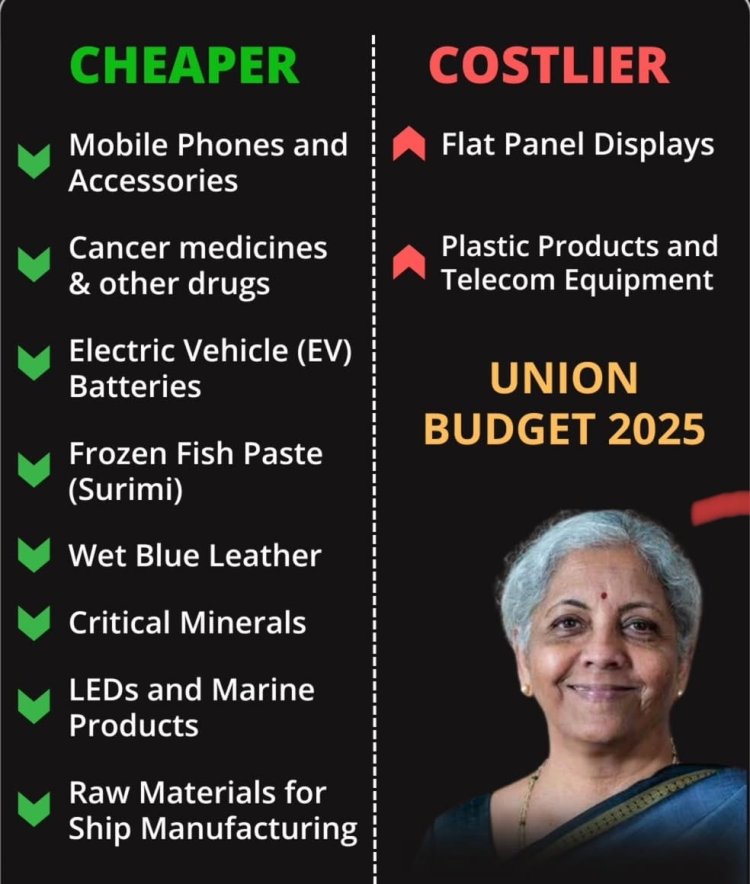
1. Agriculture and Rural Development
- National Mission on High-Yielding Seeds: Focus on climate-resilient seeds and improved agricultural output.
- Makhana Board in Bihar: To promote production, processing, and marketing.
- PM Dhan-Dhaanya Krishi Yojana: Targeting 100 districts to enhance agricultural growth.
- Cotton Productivity Mission: A five-year plan to improve sustainability in cotton farming.
- Enhanced Kisan Credit Card (KCC): ₹5 lakh credit for 7.7 crore farmers, fishermen, and dairy farmers.
- Aatmanirbharta in Pulses: A six-year initiative to improve production of pulses.
-
Allocation: ₹2.5 lakh crore for agriculture and rural development.
-
Key Initiatives:
-
Doubling farmers' income by 2030 through technology adoption and market linkages.
-
Expansion of PM-KISAN scheme to include landless laborers.
-
Promotion of organic farming and FPOs (Farmer Producer Organizations).
-
-
Infrastructure: Development of 10,000 new agro-processing units and cold storage facilities.
2. MSME & Industrial Growth
- Credit Cards for Micro Enterprises: ₹5 lakh limit for small businesses; 10 lakh cards to be issued in the first year.
- ₹2 Crore Loans for First-time Entrepreneurs: Benefiting 5 lakh startups, especially among women and marginalized communities.
- Focus Product Scheme for Leather & Footwear: Aiming for ₹4 lakh crore turnover and 22 lakh new jobs.
- Boost for Toy Manufacturing: Cluster development and skill-building for ‘Made in India’ toys.
- Food Processing Push: National Institute of Food Technology to be set up in Bihar.
-
Allocation: ₹1.2 lakh crore for MSME sector.
-
Key Initiatives:
-
Extension of credit guarantee schemes for small businesses.
-
Introduction of a new "Startup India 2.0" program with tax incentives.
-
Skill development programs to enhance employability.
-
-
Digital Push: 100% digitization of MSME operations by 2026.
3. Infrastructure & Urban Development
- ₹1 Lakh Crore Urban Challenge Fund: Focus on cities as economic hubs and sanitation.
- Asset Monetization Plan (₹10 Lakh Crore): Funds to be reinvested into infrastructure projects.
- 50-Year Interest-Free Loans to States: ₹1.5 lakh crore allocated for state-level development.
- Maritime Development Fund (₹25,000 Crore): Long-term financing for port and logistics sector.
-
Allocation: ₹10 lakh crore for infrastructure projects.
-
Key Projects:
-
Expansion of National Highways by 25,000 km.
-
Development of 50 new airports under the UDAN scheme.
-
Green energy corridors and smart cities.
-
-
Public-Private Partnerships (PPP): Increased focus on attracting private investment.
4. Social Welfare & Human Resource Development
- Saksham Anganwadi & Poshan 2.0: Strengthening nutrition programs.
- 50,000 Atal Tinkering Labs: To be set up in government schools.
- Broadband for Schools & Rural Health Centers: Digital inclusion initiative.
- Expansion of IITs & AI Research Center: ₹500 crore allocated for an AI-focused educational hub.
- Medical Education Expansion: 75,000 additional seats to be created over 5 years.
-
Allocation: ₹75,000 crore for green initiatives.
-
Key Initiatives:
-
Promotion of renewable energy projects (solar, wind, and hydrogen).
-
Incentives for electric vehicle adoption.
-
National afforestation program to increase green cover.
-
5. Tax Reforms & Financial Sector
- FDI Limit in Insurance Raised to 100%: Boosting foreign investments.
- Revamped Central KYC Registry: Streamlining financial transactions.
- Jan Vishwas Bill 2.0: Decriminalization of 100+ financial provisions.
- Direct Tax Benefits for Middle Class:
- Higher TDS Exemption for Senior Citizens: Increased from ₹50,000 to ₹1 lakh.
- No tax on income up to ₹4 lakh; revised tax brackets to encourage voluntary compliance.
- GST & Customs Reforms: Simplification of tariffs, reduction of multiple cesses.
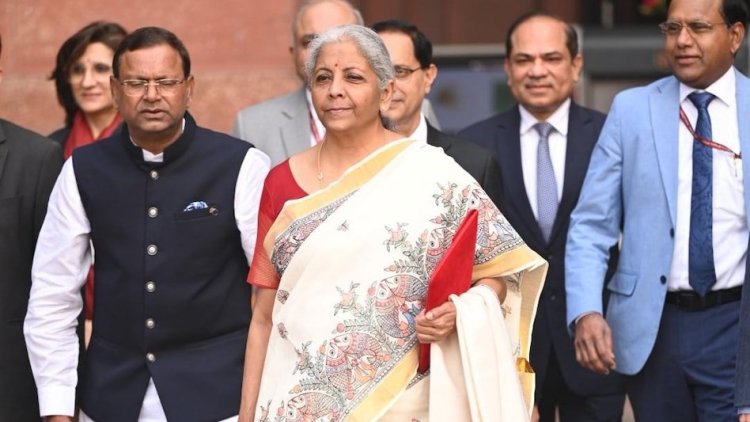
6. Revenue and Fiscal Health
- Projected Revenue Receipts: ₹34.2 lakh crore.
- Planned Capital Expenditure: ₹15.5 lakh crore.
- Fiscal Deficit Target: 4.4% of GDP.
- States’ Share of Tax Revenue: 22% of total revenue.
7. Green Economy and Sustainability
-
Allocation: ₹75,000 crore for green initiatives.
-
Key Initiatives:
-
Promotion of renewable energy projects (solar, wind, and hydrogen).
-
Incentives for electric vehicle adoption.
-
National afforestation program to increase green cover.
-
8. Exports and Global Trade
-
Target: $1 trillion in exports by 2030.
-
Key Initiatives:
-
Establishment of 20 new export hubs.
-
Incentives for labor-intensive sectors like textiles and handicrafts.
-
Strengthening trade ties with ASEAN and African nations.
-
This budget presents a balanced approach, focusing on economic resilience, sustainable growth, and social inclusion, ensuring India moves towards its "Viksit Bharat" vision.
The Union Budget 2025-26 lays a strong foundation for India's journey toward becoming a developed nation by 2047. By prioritizing key sectors, maintaining fiscal discipline, and promoting inclusivity, the budget aims to create a resilient and sustainable economy.

 Editor
Editor 







